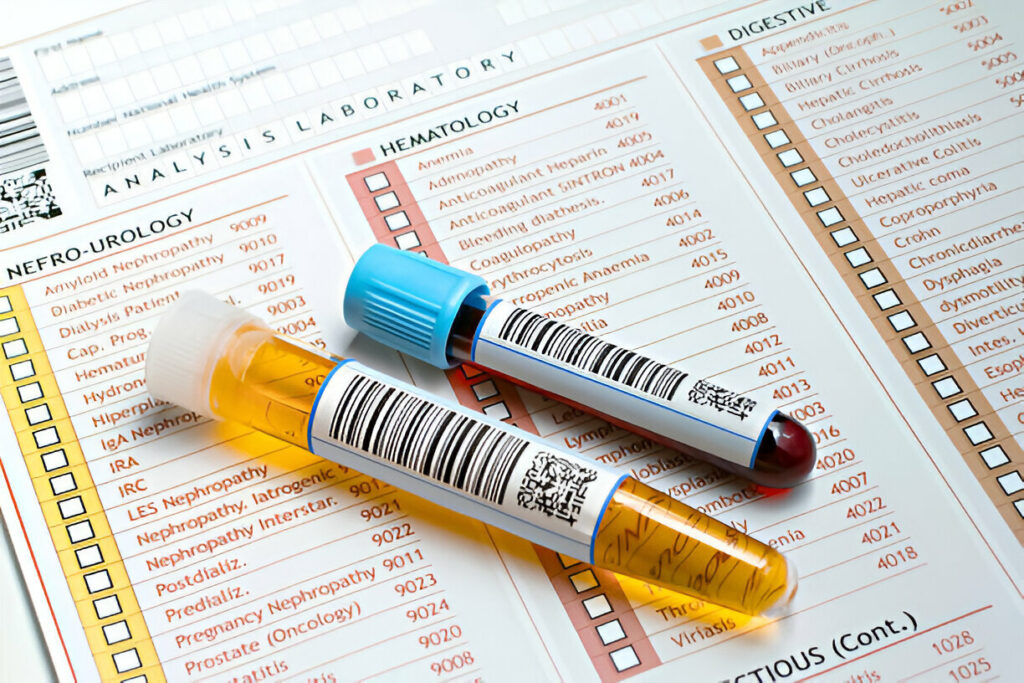Blood tests are one of the most commonly used tools in medical diagnostics. Whether you’re visiting your doctor for a routine check-up or investigating a health concern, understanding your blood test reports can help you take charge of your health. But for many people, the medical jargon and complex numbers can be confusing.
This beginner’s guide is designed to help you break down the key components of your blood test report and understand what those numbers really mean.
What is a Blood Test Report?
A blood test report is a document that shows the levels of various components in your blood. These components provide vital information about your overall health, organ function, immune system status, and nutritional deficiencies.
Doctors use these reports to detect infections, monitor chronic diseases, assess organ function, and check how well treatments are working.
Common Types of Blood Tests and What They Measure
1. Complete Blood Count (CBC)
A Complete Blood Count (CBC) measures different types of blood cells and gives insights into your general health.
| Component | What It Means |
|---|---|
| Red Blood Cells (RBC) | Carry oxygen; low levels may indicate anemia. |
| Hemoglobin (Hb) | Protein in red blood cells; low levels suggest anemia. |
| White Blood Cells (WBC) | Help fight infections; high or low counts can indicate an immune response or infection. |
| Platelets | Help with blood clotting; abnormal levels may affect bleeding. |
| Hematocrit | Measures the proportion of red blood cells in blood. |
2. Basic Metabolic Panel (BMP)
This test checks key elements in your blood that affect organ function.
| Component | Function |
|---|---|
| Glucose | High levels could indicate diabetes or pre-diabetes. |
| Calcium | Essential for bone health, muscles, and nerves. |
| Sodium, Potassium, Chloride | Important for fluid balance and heart function. |
| Creatinine & BUN | Indicators of kidney function. |
3. Lipid Profile
A Lipid Profile evaluates the fats in your blood, which can signal the risk of heart disease.
| Component | Ideal Range |
|---|---|
| Total Cholesterol | Less than 200 mg/dL |
| LDL (Bad Cholesterol) | Less than 100 mg/dL |
| HDL (Good Cholesterol) | More than 40 mg/dL (men), more than 50 mg/dL (women) |
| Triglycerides | Less than 150 mg/dL |
4. Liver Function Test (LFT)
These tests check enzymes and proteins that show how well your liver is working.
| Component | What It Indicates |
|---|---|
| ALT and AST | Elevated levels may indicate liver damage. |
| Bilirubin | High levels can lead to jaundice. |
| Albumin | Low levels can indicate liver or kidney issues. |
5. Thyroid Function Test
Checks how well your thyroid gland is working.
| Component | What It Means |
|---|---|
| TSH | High levels may mean hypothyroidism. |
| T3, T4 | Evaluate thyroid hormone production. |
How to Read and Interpret Your Blood Test Reports
- Compare with Reference Ranges: Your report usually includes a reference range. If your values are outside this range, it could signal a potential issue — but not always.
- Look for Patterns: One abnormal value might not mean much. Multiple out-of-range values in related tests are more telling.
- Consult Your Doctor: Never self-diagnose. Always discuss your blood test reports with a healthcare provider who can interpret the results in the context of your overall health.
When to Be Concerned
Some deviations in your blood test reports are minor and may not require action. However, if you notice any of the following, it’s important to follow up with your doctor:
- Very high or very low values
- Symptoms that align with the abnormal result
- Changes over time in repeat tests
Tips for Accurate Blood Test Results
- Follow fasting instructions if required (usually 8–12 hours before testing).
- Avoid alcohol and strenuous exercise the day before testing.
- Tell your doctor about all medications and supplements you’re taking.
Final Thoughts on Blood Test Reports
Understanding your blood test reports can feel overwhelming at first, but breaking down the major sections can help you become more informed about your health. Knowing what the key numbers mean allows you to have better conversations with your doctor, catch warning signs early, and take control of your well-being.
If in doubt, always consult a medical professional. A number on a report is just one piece of the puzzle — your symptoms, history, and lifestyle all matter, too.




